Phenylphosphonic acid
Synonym(s):Benzene phosphonic acid
- CAS NO.:1571-33-1
- Empirical Formula: C6H7O3P
- Molecular Weight: 158.09
- MDL number: MFCD00002136
- EINECS: 216-388-1
- SAFETY DATA SHEET (SDS)
- Update Date: 2025-09-25 17:15:13
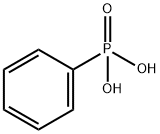
What is Phenylphosphonic acid?
Chemical properties
white to off-white crystalline powder
The Uses of Phenylphosphonic acid
Phenylphosphonic acid additive used with Noyori's catalyst for oxidation of sulfides to sulfones. Used as additive of unsaturated polyester PU resin. It also can be added into nylon to improve its polymerization degree. It can be used as extreme pressure agent of lube; used as catalyst of carboxylic acid & alcohol reaction; it can be used as fire retarding treatment of fiber used asganic materials.
The Uses of Phenylphosphonic acid
Intermediate in antifouling paint agents; catalyst in organic reactions.
Definition
ChEBI: Phenylphosphonic acid is a member of benzenes.
Hazard
Highly toxic.
Purification Methods
It is best to recrystallise it from H2O by concentrating an aqueous solution to a small volume and allowing to crystallise. Wash the crystals with ice cold H2O and dry them in a vacuum desiccator over H2SO4. [Lecher et al. J Am Chem Soc 76 1045 1954.] pK2 5 values in H2O are 7.07, and in 50% EtOH 8.26. [Jaffé et al. J Am Chem Soc 75 2209 1953, IR: Daasch & Smith Anal Chem 23 853 1951, Beilstein 16 IV 1068.]
Properties of Phenylphosphonic acid
| Melting point: | 162-164 °C (lit.) |
| Boiling point: | 241-243 °C(lit.) |
| Density | 1.412 g/mL at 25 °C(lit.) |
| vapor pressure | 0-0Pa at 20-25℃ |
| refractive index | n |
| Flash point: | >230 °F |
| storage temp. | Sealed in dry,Room Temperature |
| form | Crystalline Powder |
| pka | pK1:1.83;pK2:7.07 (25°C) |
| color | White to off-white |
| Water Solubility | 40.4 g/100 mL (25 ºC) |
| BRN | 2245168 |
| CAS DataBase Reference | 1571-33-1(CAS DataBase Reference) |
| EPA Substance Registry System | Phosphonic acid, phenyl- (1571-33-1) |
Safety information for Phenylphosphonic acid
| Signal word | Danger |
| Pictogram(s) |
 Corrosion Corrosives GHS05  Exclamation Mark Irritant GHS07 |
| GHS Hazard Statements |
H302:Acute toxicity,oral H314:Skin corrosion/irritation |
| Precautionary Statement Codes |
P260:Do not breathe dust/fume/gas/mist/vapours/spray. P270:Do not eat, drink or smoke when using this product. P280:Wear protective gloves/protective clothing/eye protection/face protection. P301+P312:IF SWALLOWED: call a POISON CENTER or doctor/physician IF you feel unwell. P303+P361+P353:IF ON SKIN (or hair): Remove/Take off Immediately all contaminated clothing. Rinse SKIN with water/shower. P305+P351+P338:IF IN EYES: Rinse cautiously with water for several minutes. Remove contact lenses, if present and easy to do. Continuerinsing. |
Computed Descriptors for Phenylphosphonic acid
Phenylphosphonic acid manufacturer
New Products
Indole Methyl Resin tert-butyl 9-methoxy-3-azaspiro[5.5]undecane-3-carboxylate Boc-His(Boc)-OH 2-CTC Resin 4-Chloro-7-tosy1-7Hpyrrolo[2,3-d]pyrimidine 5,7-Dibromo-1H-indole 2,5-dichloro-N-hydroxy-4,6-dimethylpyridine-3-carboximidamide 2,2-Dimethoxy-7-azaspiro[3.5]nonane hydrochloride 4-chloromethyl-5-methyl-1,3-dioxol-2-one (DMDO-Cl) R-2-BENZYLOXY PROPIONIC ACID 1,1’-CARBONYLDIIMIDAZOLE 1,1’-CARBONYLDI (1,2-4 TRIAZOLE) N-METHYL INDAZOLE-3-CARBOXYLIC ACID 4-((2-hydroxyethyl)thio)benzoic acid 1-(TERT-BUTOXYCARBONYL)-2-PYRROLIDINONE Methyl 6-methylnicotinate 3-Pyridineacrylic acid tert-Butyl carbazate TETRAHYDRO-2H-PYRAN-3-OL 2-((4-morpholinophenylamino) (methylthio) methylene) malononitrile 3-(4-morpholinophenylamino)-5-amino-1H-pyrazole-4-carbonitrile 2,4-dihydroxybenzaldehyde 1,3-Diethyl-1,3-Diphenylurea Methyl 2-methylquinoline-6-carboxylateRelated products of tetrahydrofuran
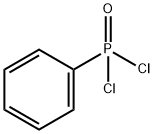
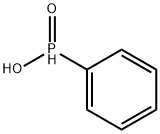

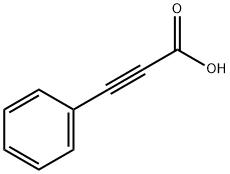
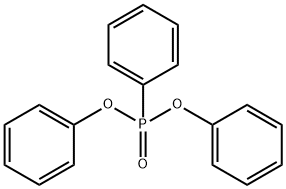

![2-({[benzyl(2-methoxyethyl)amino]acetyl}oxy)phenylphosphonic acid](https://img.chemicalbook.in/CAS/20200331/GIF/CB62004590.gif)

You may like
-
 Phenylphosphonic Acid 99%View Details
Phenylphosphonic Acid 99%View Details
1571-33-1 -
 Phenylphosphonic Acid CAS 1571-33-1View Details
Phenylphosphonic Acid CAS 1571-33-1View Details
1571-33-1 -
 Phenylphosphonic acid, 98% CAS 1571-33-1View Details
Phenylphosphonic acid, 98% CAS 1571-33-1View Details
1571-33-1 -
 Phenylphosphonic acid CAS 1571-33-1View Details
Phenylphosphonic acid CAS 1571-33-1View Details
1571-33-1 -
 Pyridine 99.5% HPLC /UV SpectroscopyView Details
Pyridine 99.5% HPLC /UV SpectroscopyView Details
110-86-1 -
 Dibutyl PhthalateView Details
Dibutyl PhthalateView Details
84-74-2 -
 Imidazole Spot supply, competitive priceView Details
Imidazole Spot supply, competitive priceView Details
288-32-4 -
 Thiourea 99% ARView Details
Thiourea 99% ARView Details
62-56-6
